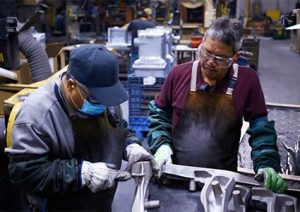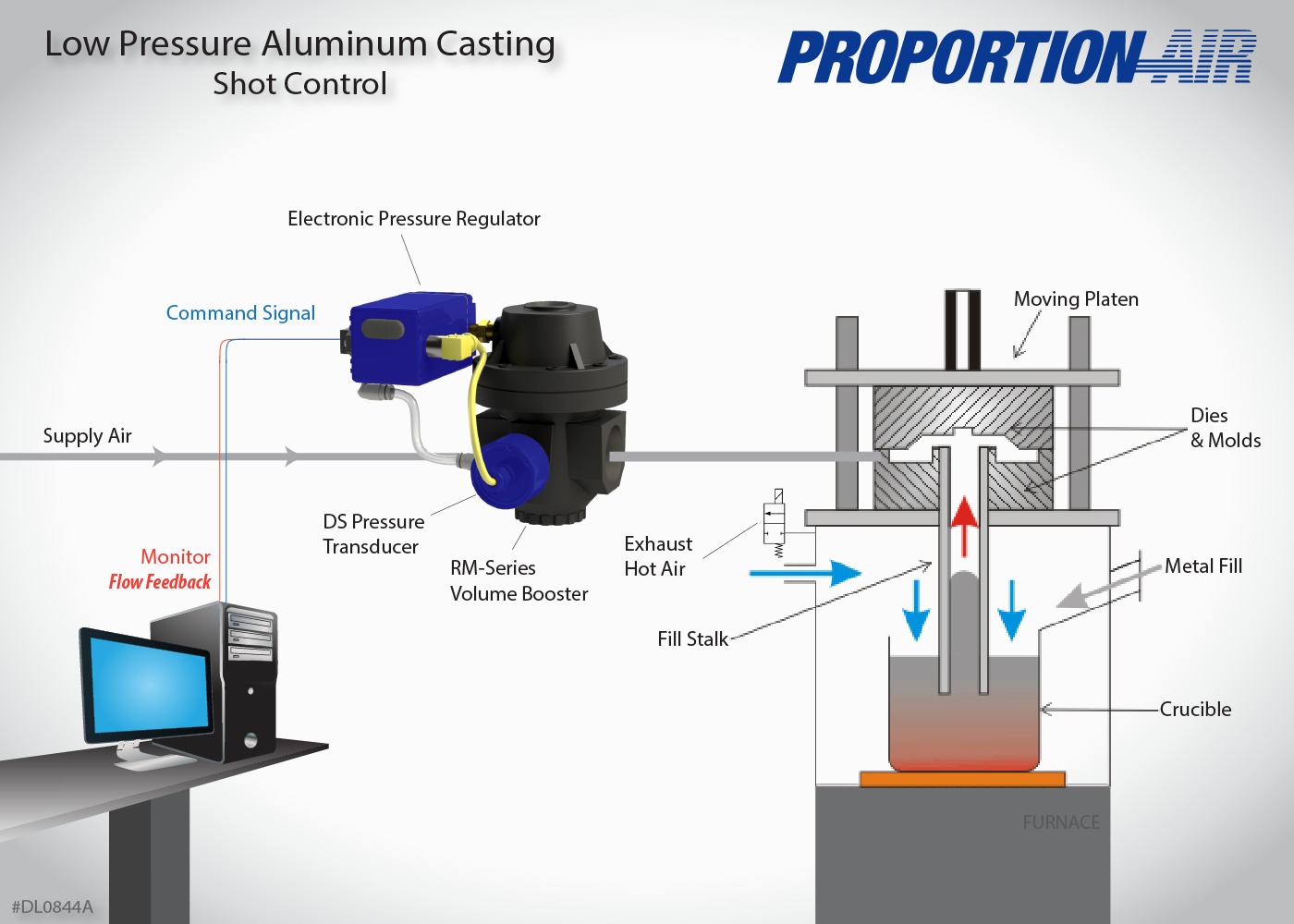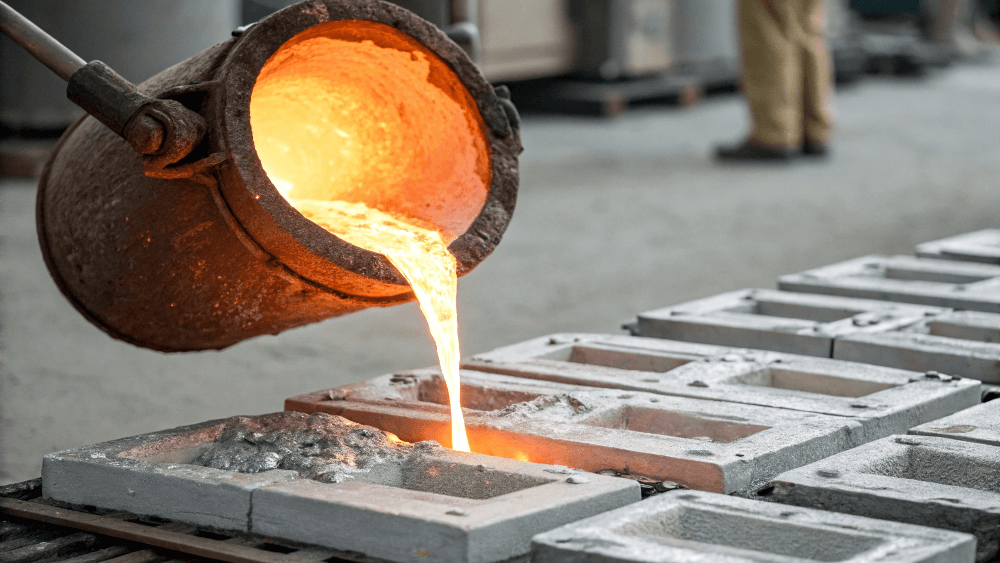Aluminum Foundry Wisconsin is recognized for dependability in casting
Just How Aluminum Foundry Adds to Advancements in Aerospace Engineering
Aluminum factories are integral to advancements in aerospace design. They produce lightweight, high-strength components that are crucial for contemporary airplane. With sophisticated casting strategies, these foundries create complicated geometries that enhance architectural stability. Additionally, the growth of remarkable Aluminum alloys sustains the sector's focus on gas efficiency and sustainability. Obstacles continue to be in the production procedure. Recognizing these variables reveals the profound influence of Aluminum on aeronautics's future.
The Relevance of Lightweight Materials in Aerospace Layout
As the aerospace industry remains to advance, the relevance of light-weight materials ends up being progressively evident. The demand for performance and sustainability drives designers to focus on the use of materials that minimize general weight without jeopardizing structural honesty. Light-weight products, especially Aluminum, play an essential duty in boosting fuel effectiveness, enhancing payload ability, and boosting the overall performance of airplane.
Furthermore, the combination of these materials permits ingenious layouts, making it possible for suppliers to create even more aerodynamic forms that can withstand extreme conditions. The decrease in weight not only lowers functional costs however likewise contributes to a reduced environmental footprint, straightening with global initiatives toward sustainability in air travel.
Advanced Spreading Techniques in Aluminum Foundries
Advanced casting techniques in Aluminum factories play an essential function in aerospace engineering by making it possible for the manufacturing of exact and lightweight components. Innovations in mold style and accuracy casting processes are essential in achieving optimal performance and structural stability. Additionally, the growth of light-weight alloys improves the general performance and efficiency of aerospace applications.
Cutting-edge Mold And Mildew Layout
Cutting-edge mold and mildew design plays an important duty in the performance and efficiency of Aluminum foundries, especially within the aerospace sector. By leveraging advanced materials and techniques, contemporary molds can be engineered to hold up against high temperature levels and pressures, ensuring peak performance during the spreading procedure. These styles typically include intricate geometries that enable the production of lightweight yet structurally audio components, essential for aerospace applications. Furthermore, using computer-aided style (CAD) software helps with precise modeling, making it possible for factories to fine-tune and replicate mold styles prior to physical production begins. This not only enhances the top quality of cast components however also reduces waste and lead times, bring about significant cost savings. Generally, innovative mold and mildew layout is a cornerstone of progress in Aluminum Foundry innovation for aerospace engineering.
Accuracy Casting Procedures
The performance of innovative mold and mildew styles seamlessly integrates with precision casting processes, which are crucial for producing high-grade Aluminum components in aerospace design. These procedures, consisting of sand spreading, die spreading, and financial investment casting, guarantee the creation of complex geometries with tight resistances. Advanced techniques like vacuum casting and stress die casting boost the honesty and surface finish of the final items. Precision spreading lessens product waste while making best use of the mechanical residential properties of Aluminum, important for aerospace applications. Additionally, employing real-time tracking and advanced simulation devices during the spreading procedure enables immediate changes, leading to enhanced quality control. Jointly, these accuracy spreading procedures placement Aluminum foundries at the leading edge of aerospace technology, supporting the market's need for dependability and performance.
Light-weight Alloy Advancement
As aerospace engineers look for to improve fuel performance and performance, lightweight alloy growth becomes a vital focus in Aluminum shops. These factories utilize advanced spreading methods to develop alloys that provide premium strength-to-weight proportions. Advancements in alloy structure, including the unification of elements like lithium and magnesium, enable the production of materials that endure extreme problems while reducing general aircraft weight. Methods such as die spreading and investment casting help with the precision manufacturing of complex forms, which are critical for aerospace applications. Additionally, recurring research aims to optimize these alloys for boosted mechanical residential or commercial properties and raised resilience. By focusing on lightweight alloy growth, Aluminum factories greatly add to the development of aerospace engineering, leading the way for more reliable and sustainable aircraft styles.

Enhancing Architectural Integrity Via Aluminum Parts
Aluminum components offer substantial advantages in boosting architectural stability within aerospace design. Their lightweight nature adds to total efficiency while keeping stamina, which is important for aircraft performance. Additionally, the tension resistance residential or commercial properties of Aluminum aid guarantee the longevity and integrity of aerospace frameworks under various functional problems.
Lightweight Material Benefits
While typical materials often jeopardize weight for toughness, utilizing Aluminum parts in aerospace design supplies considerable advantages in structural honesty. Aluminum's light-weight nature adds to general layout efficiency, enabling more streamlined airplane that eat less fuel, therefore improving sustainability. The material's excellent strength-to-weight ratio assurances that elements preserve resilience without including unneeded mass. This high quality fosters boosted performance and dexterity in trip, as well as maximized haul abilities. Furthermore, Aluminum's resistance to deterioration prolongs the life expectancy of aerospace frameworks, decreasing upkeep costs and boosting safety. As suppliers increasingly embrace Aluminum alloys, the aerospace sector experiences a transformative change towards Check This Out a lot more reliable and reliable engineering services that focus on both efficiency and environmental duty.
Stress Resistance Residences
Although different products have distinct residential or commercial properties, Aluminum's extraordinary stress and anxiety resistance stands out as an important aspect in boosting the architectural honesty of aerospace components. This resistance plays a vital function in making sure that airplane can stand up to different functional anxieties, consisting of exhaustion, influence, and ecological problems. Aluminum alloys, particularly crafted for aerospace applications, show high tensile toughness while preserving light-weight qualities, enabling designers to make more reliable frameworks - Aluminum Foundry. Furthermore, the capability of Aluminum to withstand cyclic loading without considerable contortion adds to the long life and dependability of aerospace components. As advancements proceed in Aluminum Foundry methods, the development of stress-resistant Aluminum elements promises more enhancements in performance, safety and security, and performance throughout the aerospace sector, strengthening Aluminum's duty as a recommended material in modern-day engineering
Fuel Effectiveness Improvements Driven by Aluminum Innovations
As the aerospace market looks for to improve gas effectiveness, innovative uses Aluminum have become a crucial option. Aluminum's lightweight nature especially decreases airplane weight, enabling lower gas usage during trip. This reduction in weight is vital, as also tiny reductions can cause significant renovations in overall gas economic climate.
Advanced Aluminum alloys, made for improved toughness and sturdiness, make it possible for producers to develop components that preserve architectural integrity while minimizing mass - Aluminum Foundry. Additionally, the combination of Aluminum in airframes and engine parts promotes enhanced the rules of aerodynamics, adding to reduced drag and increased effectiveness
The adoption of Aluminum in aerospace not only fulfills the demand for fuel-efficient style however additionally aligns with regulative stress for reduced exhausts. As these developments proceed to advance, they play a significant function in establishing brand-new standards for gas effectiveness, making certain that the aerospace sector can meet growing ecological and financial challenges.

The Function of Aluminum in Sustainable Air Travel Practices
The raising focus on lasting air travel methods has positioned Aluminum as a necessary product in the mission for greener aircraft design. Known for its lightweight properties, Aluminum considerably minimizes airplane weight, leading to lower fuel usage and exhausts. Its recyclability my response better boosts its sustainability account, as Aluminum can be reused indefinitely without loss of quality. This particular sustains a round economy within the aeronautics field, lessening waste and source exhaustion.
Improvements in Aluminum alloys have improved their toughness and deterioration resistance, allowing for longer solution life and decreased upkeep requirements. These innovations promote the advancement of much more effective airplane structures, adding to general sustainability efforts. Additionally, Aluminum's thermal conductivity plays an important function in energy-efficient styles, enhancing systems such as heat exchangers. Jointly, these features underscore Aluminum's pivotal duty ahead of time lasting aviation, straightening with international efforts intended at reducing the environmental impact of flight.
Challenges Dealt With by Aluminum Foundries in Aerospace Manufacturing
While Aluminum shops play a necessary function in aerospace manufacturing, they encounter significant challenges that can affect production efficiency and quality. One major obstacle is the rigorous quality control requirements required in the aerospace sector. Any kind of issue can endanger safety and security and performance, requiring strenuous evaluation processes that expand manufacturing timelines. Furthermore, foundries commonly emulate rising and fall basic material costs, which can impact prices and earnings. The complexity of Aluminum alloys used in aerospace applications additional makes complex the production process, as precise solutions are vital for accomplishing preferred mechanical residential or commercial properties. Proficient labor lacks prevent the capability to keep high-grade manufacturing levels. Ecological regulations impose constraints on discharges and waste administration, requiring factories to invest in lasting techniques, which can be cost-prohibitive. These aspects collectively create a landscape where Aluminum shops must continuously adapt to meet the developing needs of aerospace production while guaranteeing safety and compliance.
Future Patterns in Aluminum Applications for Aerospace Engineering
With innovations in technology and enhancing needs for effectiveness, the future of Aluminum applications in aerospace design is poised for considerable makeover. The integration of innovative Aluminum alloys and composites is anticipated to enhance strength-to-weight proportions, bring about even more fuel-efficient airplane layouts. Additionally, improvements in additive manufacturing methods will certainly permit the production of intricate Aluminum structures that were formerly impossible, enhancing performance and minimizing waste.

Sustainable methods will certainly play a necessary function, with a growing focus on reusing Aluminum to reduce ecological impact. The aerospace industry is likely to embrace smarter manufacturing processes, such as automation and artificial knowledge, making sure better and precision in Aluminum components. Cooperations between Aluminum factories and aerospace business will foster research and advancement, leading the method for new applications that satisfy the rigid requirements of contemporary aerospace engineering. In general, the future looks assuring for Aluminum's role fit the skies
Often Asked Concerns
What Are the Environmental Effects of Aluminum Production in Aerospace?
The environmental influences of Aluminum manufacturing in aerospace consist of substantial power intake, greenhouse gas exhausts, and habitat disruption. Additionally, mining processes can cause dirt degradation and water contamination, increasing concerns regarding hop over to here sustainability and environmental equilibrium.
Just How Does Aluminum Compare to Other Products in Aerospace Applications?
Aluminum uses a distinct combination of light-weight buildings, deterioration resistance, and cost-effectiveness compared to various other materials. Its high strength-to-weight proportion makes it specifically helpful for aerospace applications, improving fuel efficiency and overall performance in airplane layout.
What Credentials Do Aluminum Foundry Workers Requirement for Aerospace Projects?
Aluminum Foundry employees call for customized training in metallurgy and casting techniques, in addition to expertise of aerospace sector criteria. Certifications in quality control and safety and security protocols are additionally important to guarantee conformity with rigorous aerospace job needs.
Are There Any Kind Of Safety Worry About Using Aluminum in Aerospace Design?
Safety and security problems pertaining to Aluminum in aerospace engineering include susceptibility to anxiety, rust, and fatigue fractures. Proper treatment and alloy selection are crucial to mitigate these threats, making certain architectural honesty and total safety in aerospace applications.
Exactly How Does Aluminum Recycling Advantage the Aerospace Industry?
Aluminum reusing significantly benefits the aerospace industry by minimizing material expenses, minimizing ecological effect, and saving power. This sustainable technique boosts the sector's effectiveness while promoting making use of lightweight, high-performance elements in aircraft production.
Advanced casting techniques in Aluminum shops play a critical role in aerospace design by making it possible for the manufacturing of exact and lightweight parts. Innovative mold layout plays a necessary function in the performance and effectiveness of Aluminum foundries, particularly within the aerospace field. As aerospace engineers look for to boost gas efficiency and performance, lightweight alloy development becomes a necessary emphasis in Aluminum foundries. Aluminum alloys, especially crafted for aerospace applications, exhibit high tensile toughness while maintaining light-weight features, making it possible for engineers to develop more reliable structures. Collaborations in between Aluminum shops and aerospace firms will certainly foster study and development, leading the way for new applications that fulfill the strict demands of modern aerospace design.